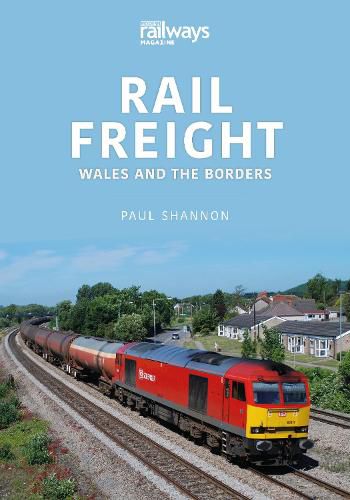Readings Newsletter
Become a Readings Member to make your shopping experience even easier.
Sign in or sign up for free!
You’re not far away from qualifying for FREE standard shipping within Australia
You’ve qualified for FREE standard shipping within Australia
The cart is loading…






The changes to rail freight in Wales and the Borders since the 1980s have been dramatic in many ways and have often been a knock-on effect of huge transformations in the industries that the railway serves, most notably, the coal-mining sector. These have led to a railway with a slimmed-down infrastructure and renewed traction and rolling-stock fleets.Until the 1980s, coal was still the lifeblood of many railway lines in South Wales. However, one by one, the pits closed, leaving just a handful of surface operations still active in 2020. The sight and sound of a Class 37 winding its way up a steep-sided valley is now a distant memory. Industrial decline has affected other traffics too, with the loss of the heavy iron ore trains to Llanwern and many other flows. However, Welsh rail freight is far from dead. Class 60-hauled oil and steel trains still ply the South Wales main line, and there have even been small revivals such as cement from Penyffordd.Illustrated with over 150 stunning photographs, many of which are previously unpublished, this volume looks at the changing face of rail freight in Wales and the Borders, detailing the changes in traction, rolling stock and railway infrastructure over four decades. 160 illustrations
$9.00 standard shipping within Australia
FREE standard shipping within Australia for orders over $100.00
Express & International shipping calculated at checkout
The changes to rail freight in Wales and the Borders since the 1980s have been dramatic in many ways and have often been a knock-on effect of huge transformations in the industries that the railway serves, most notably, the coal-mining sector. These have led to a railway with a slimmed-down infrastructure and renewed traction and rolling-stock fleets.Until the 1980s, coal was still the lifeblood of many railway lines in South Wales. However, one by one, the pits closed, leaving just a handful of surface operations still active in 2020. The sight and sound of a Class 37 winding its way up a steep-sided valley is now a distant memory. Industrial decline has affected other traffics too, with the loss of the heavy iron ore trains to Llanwern and many other flows. However, Welsh rail freight is far from dead. Class 60-hauled oil and steel trains still ply the South Wales main line, and there have even been small revivals such as cement from Penyffordd.Illustrated with over 150 stunning photographs, many of which are previously unpublished, this volume looks at the changing face of rail freight in Wales and the Borders, detailing the changes in traction, rolling stock and railway infrastructure over four decades. 160 illustrations